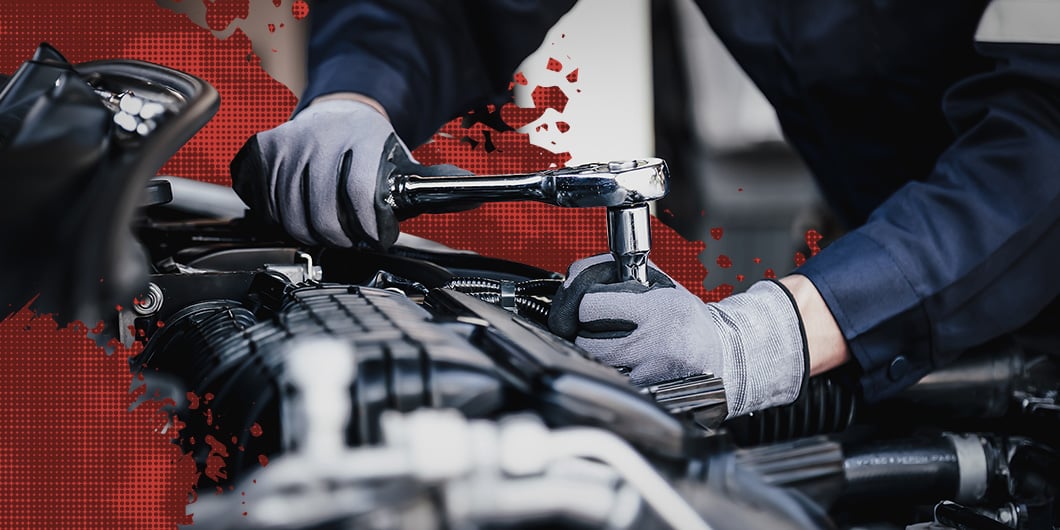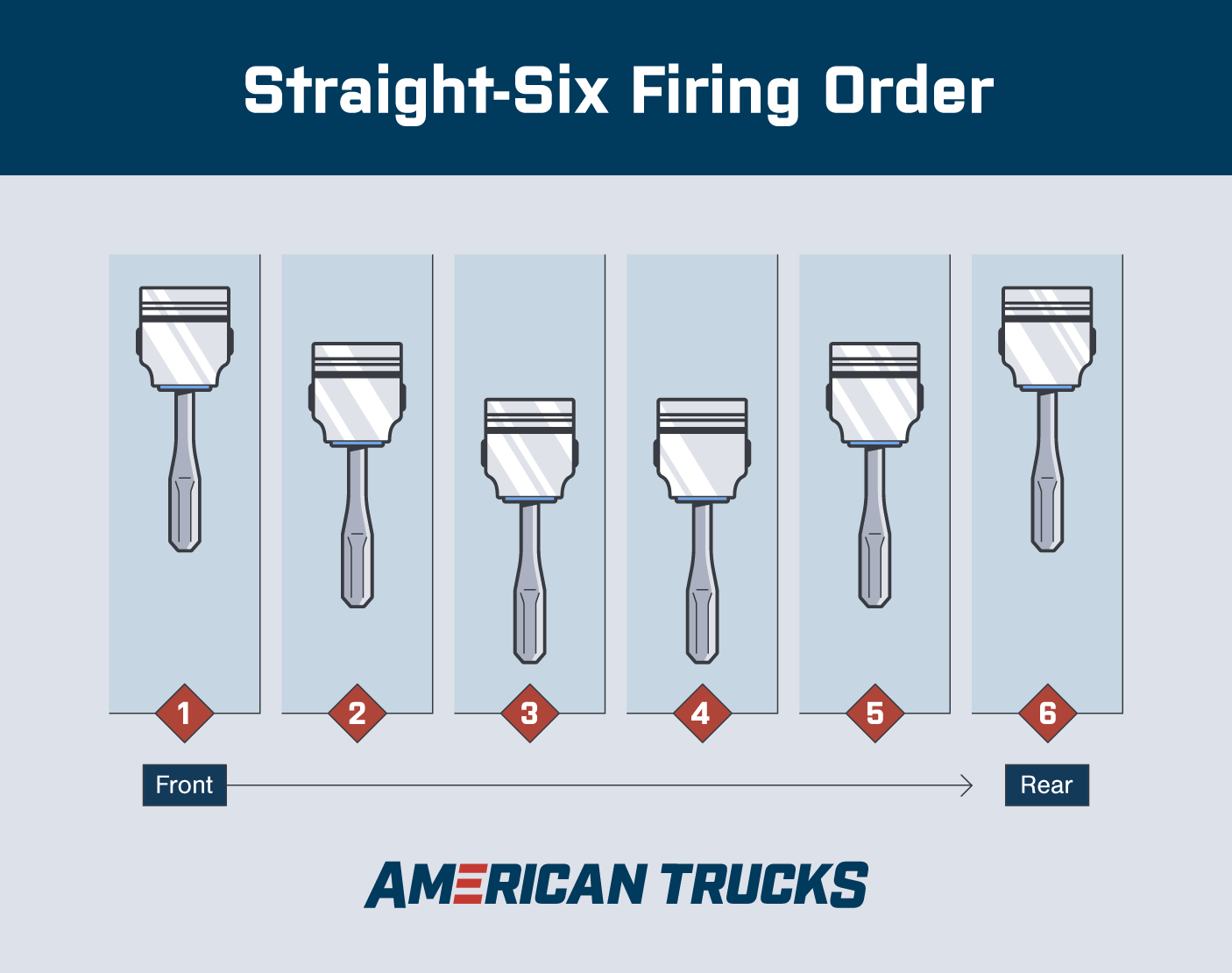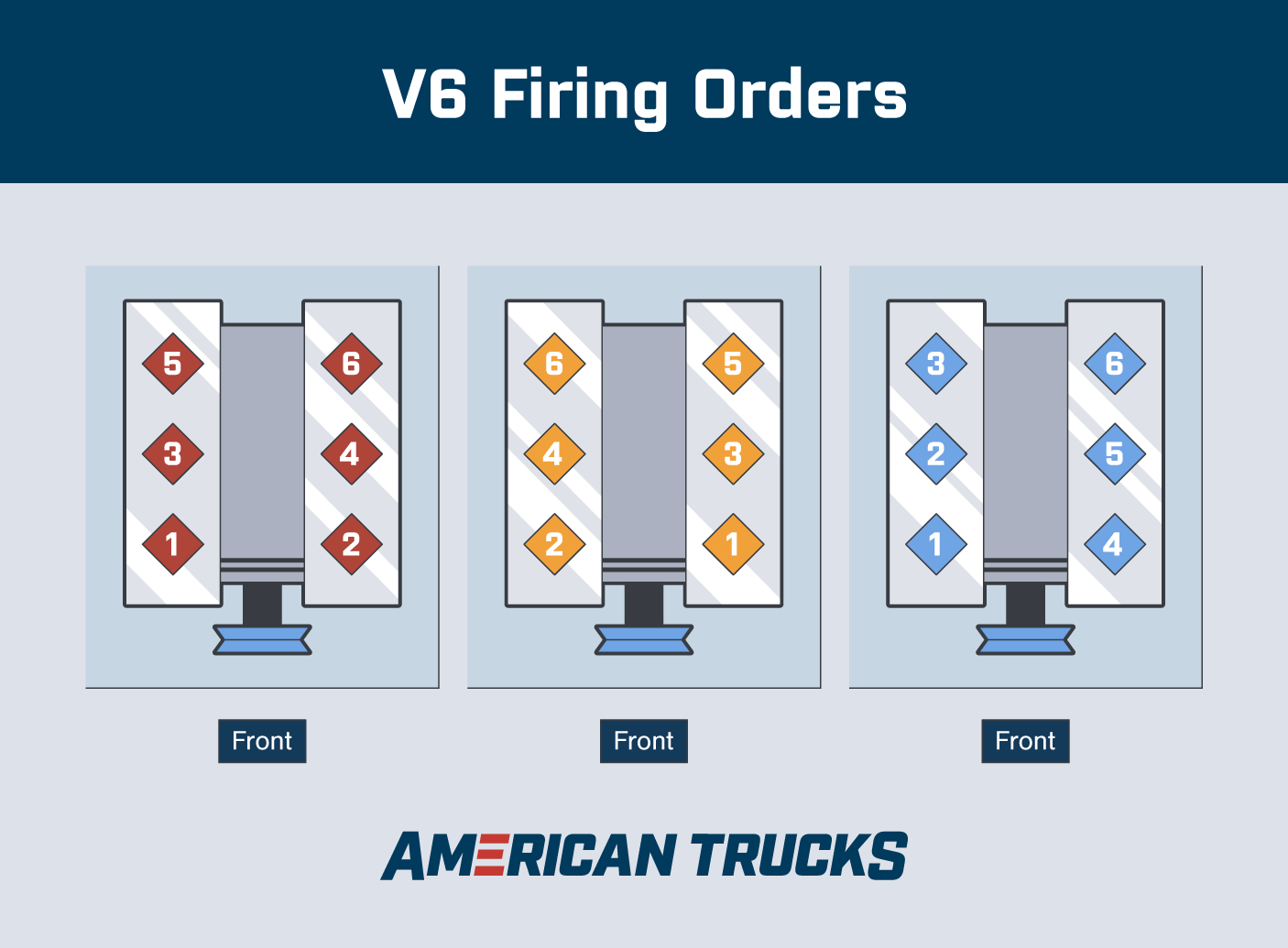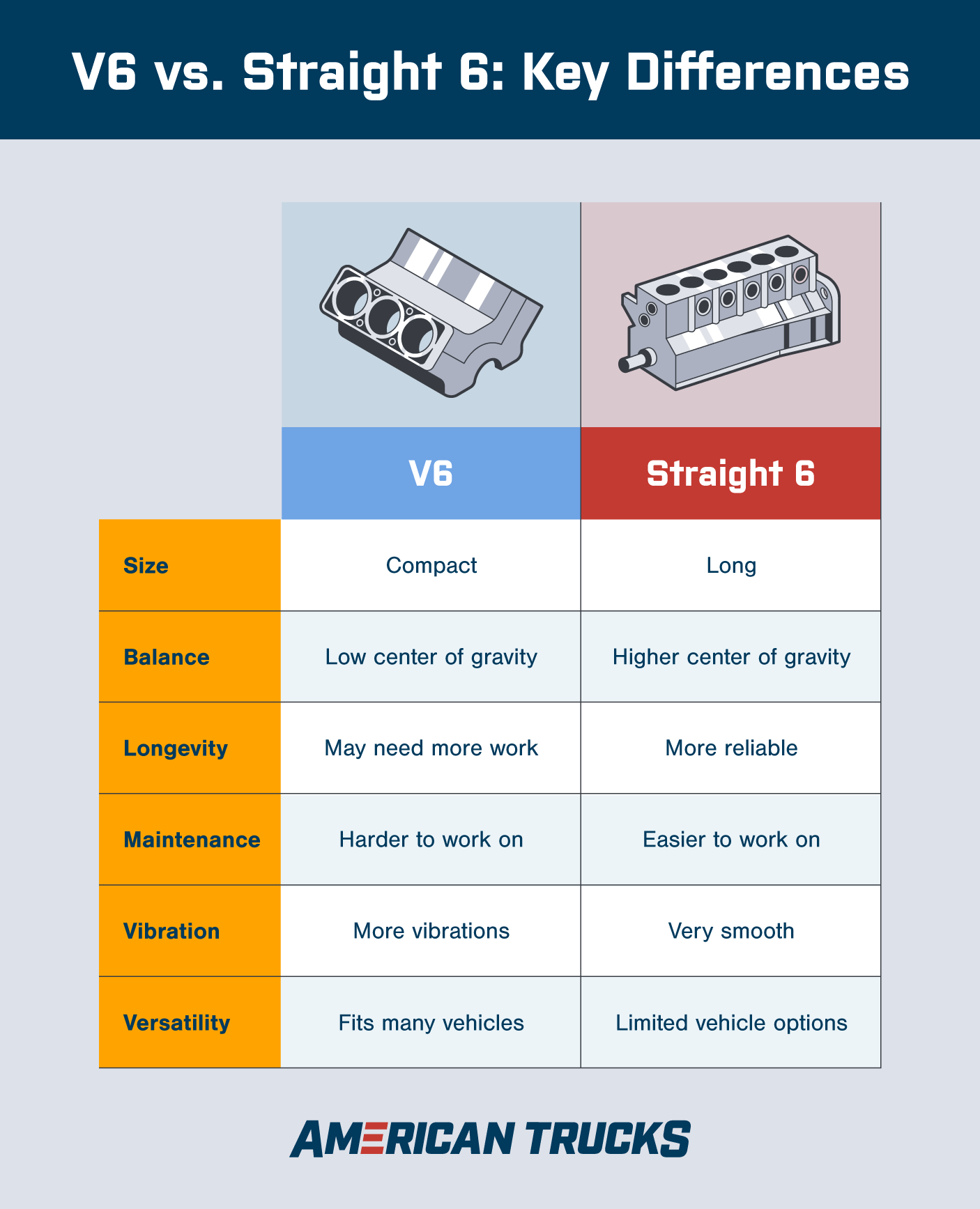In general, V6 engines are better for vehicles with front-wheel drive that don't have enough room for six inline cylinders, but straight-six engines tend to have better performance with lower vibrations.
The key difference between V6 and straight-six (or inline-six) engines is the arrangement of their six cylinders. Traditionally, the cylinders (along with their spark plugs) were arranged in a straight line, making for a long but powerful engine. The V-shaped engine layout of two rows of three cylinders that gives a V6 its name allows engines to be built smaller while maintaining six-cylinder power.
If you think the difference between these two designs starts and ends with the shape and size of the engine, think again. Both designs have unique advantages, and you'll find that many truck owners and gearheads are coming back around to the straight-six these days. If you're undecided, we'll help you uncover which side of the V6 vs. straight-six debate you want to stand on.




